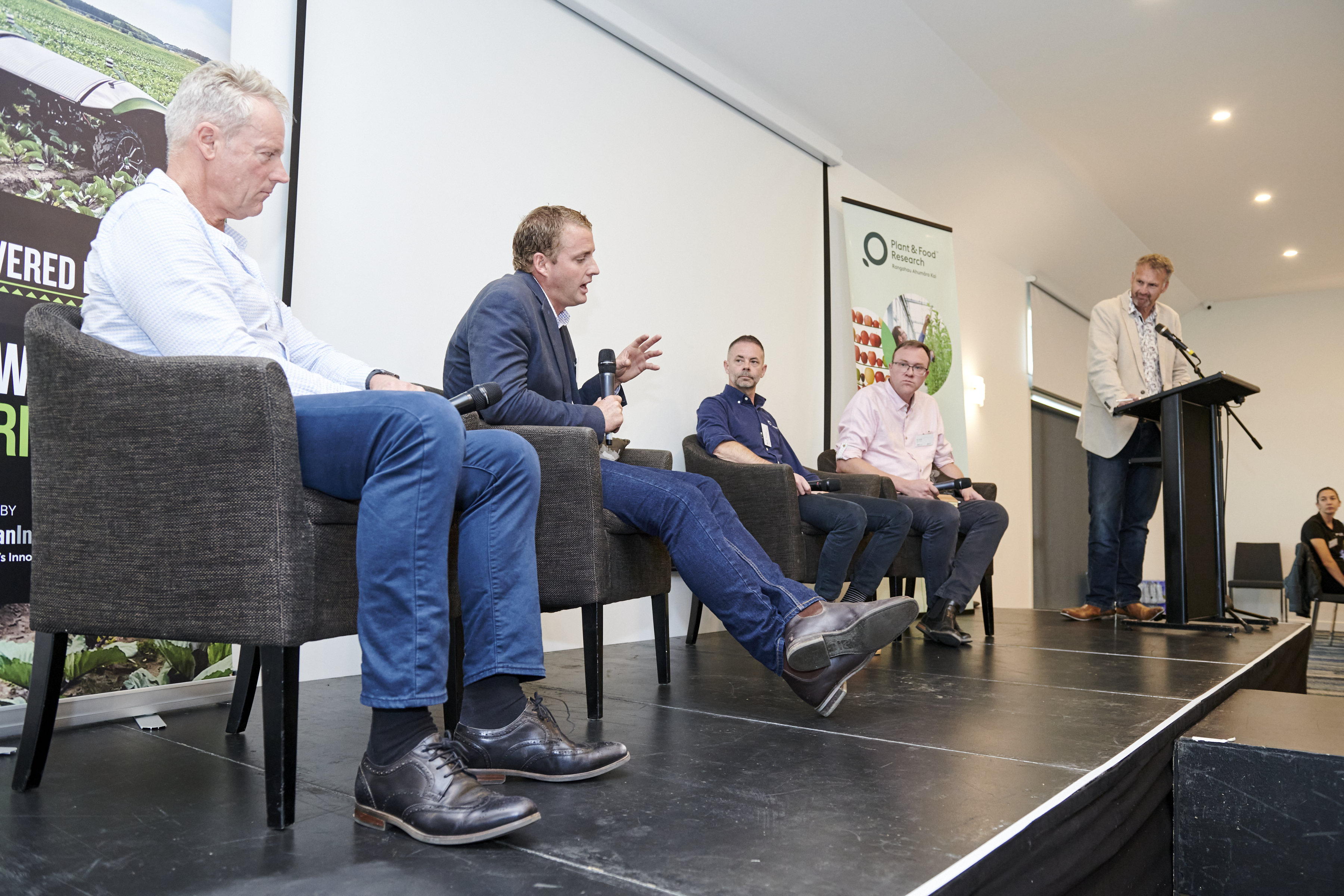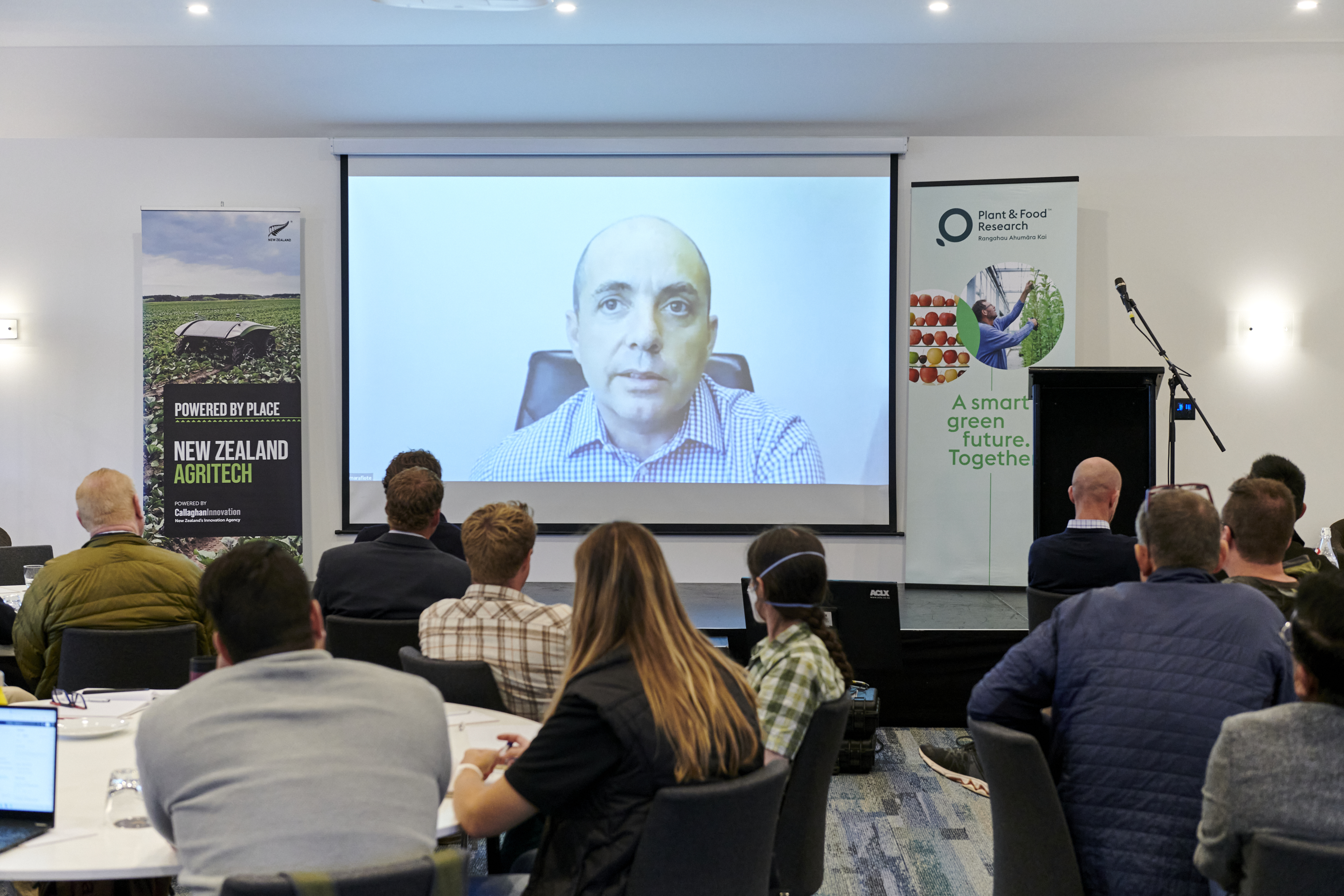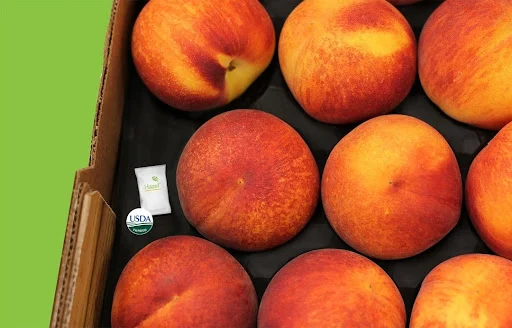Growing The Future Indoors Summit

Earlier this month, Plant and Food Research and Callaghan Innovation hosted the first ever controlled environment agriculture (CEA) summit.
According to Market.us, the global CEA sector was worth USD$74.4 billion in 2022 and is projected to grow to USD$377.6 billion by 2032. Thanks to New Zealand’s already strong reputation in agritech and research, CEA represents a significant export opportunity for New Zealand agritech businesses, as well as for the domestic market.
Throughout the two-day event in Hamilton, we were privileged to be joined by world-class speakers Henry Gordon-Smith (sustainability strategist from North America), Professor Paul Gauthier (one of the world’s leading experts in vertical farming), and Steve Marafiote (CEO of Sundrop Farms). A site visit to Greengrower was also a highlight.
 Indoor growing: The next 40 years
Indoor growing: The next 40 years
Gordon-Smith focused on the current state and future outlook for CEA, which he says is positive in the long-term, but may be bumpy in the immediate term.
Right now, indoor growing is getting both a lot of hype and a lot of investment – but especially in the northern hemisphere, the shine is wearing off. There have been four high-profile company collapses since 2019, with businesses coming up against the high price of energy or making similar mistakes by not researching markets or starting off too large.
Gordon-Smith calls this phase of sector growth the “trough of disillusionment”, which will lead to a more stable stage of investment. He expects to see global crop losses ramp up from 2027, at which point we’ll see increased sector expansion, including in “low-tech” ways as recently seen in refugee groups and other communities in urban Cairo.
 Collaboration essential for resilience
Collaboration essential for resilience
As the general population becomes more aware of the effects of climate change through events such as Cyclone Gabrielle, concerns about food security are running high.
In his talk, Professor Gauthier urged New Zealand’s CEA sector to collaborate with each other to avoid making the same mistakes. He referenced the Netherlands as an example of a collegial market, where companies avoid “reinventing the wheel” by collaborating and information-sharing.
From his base at the University of Queensland, Professor Gauthier is currently overseeing the formation of an indoor farming research centre, and encouraging growers throughout Australasia to form an official body.
 Sundrop Farms: Concentrated solar power
Sundrop Farms: Concentrated solar power
Finally, Marafiote joined virtually for a presentation on his major South Australia operation Sundrop Farms. Located north of Adelaide right on the edge of the Outback, Sundrop Farms supply a whopping 14 percent of Coles supermarkets’ tomato supply nationwide.
While designing their operations, Marafiote wanted to build in an energy supply that was both sustainable and had a constant utility cost. Sundrop Farms use “concentrated solar power”, which works by pointing 24,000 mirrors over 31 acres at a 127m central tower.
Watch the concentrated solar power in action here.
This system allows Sundrop Farms to recycle their water through a desalination process, which eases a significant pain point in their naturally very dry local environment. They’ve also begun to develop an electricity generation unit, which they hope to expand on in future.
Marafiote noted that the farms’ sustainable energy also attracted excellent members of staff willing to work above and beyond on their smart tech, and also differentiated their offering to clients keen to seek out sustainable produce.




